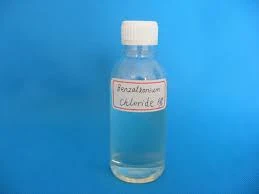chloromethyl isothiazolinone
Chloromethyl Isothiazolinone A Comprehensive Overview
Chloromethyl isothiazolinone (CMIT) is a widely used biocide and preservative in various industrial and consumer products. As part of the isothiazolinone family, it has gained significant attention due to its effectiveness in preventing microbial growth and preserving formulations. This article aims to provide a thorough understanding of CMIT its chemical properties, applications, safety concerns, and regulatory status.
Chemical Properties
Chloromethyl isothiazolinone is a synthetic organic compound with a molecular formula of C4H4ClN3OS. It is characterized by its unique isothiazolinone ring structure, which contributes to its antimicrobial properties. CMIT is typically available as a colorless to pale yellow liquid and has a faint, characteristic odor. One of its primary mechanisms of action is the disruption of cellular processes in microorganisms, leading to their death. This mechanism has made CMIT a valuable component in a variety of formulations.
Applications
CMIT is predominantly used in the cosmetics, personal care, and household products industries. It serves as a preservative in a range of formulations, including shampoos, conditioners, lotions, and creams, helping to extend shelf life and prevent the proliferation of harmful bacteria and fungi. Additionally, CMIT finds applications in industrial products such as paints, coatings, adhesives, and metalworking fluids, where microbial growth can lead to contamination and product degradation.
The versatility of CMIT stems from its effectiveness at low concentrations, making it a cost-efficient choice for manufacturers. Furthermore, its ability to work synergistically with other preservatives enhances overall performance while allowing for the reduction of other more toxic ingredients.
Safety Concerns
chloromethyl isothiazolinone

Despite its benefits, the use of chloromethyl isothiazolinone has raised safety concerns among consumers and regulatory agencies. One of the most significant concerns is its potential to cause skin irritation and sensitization. Studies have shown that CMIT can lead to allergic reactions, particularly in individuals with pre-existing sensitivities. Consequently, many cosmetic formulators are now opting for alternatives or utilizing CMIT in conjunction with other mitigating agents to reduce irritation risks.
The focus on safety has steered the cosmetics and personal care industry toward stringent testing and labeling practices, ensuring that consumers are well-informed about the presence of CMIT in products. The cosmetic industry has witnessed a shift toward transparency, with many brands proactively disclosing their ingredient lists and safety assessments.
Regulatory Status
Regulatory bodies, such as the European Commission and the FDA, closely monitor the use of chloromethyl isothiazolinone. In the European Union, CMIT is subject to strict limitations regarding its concentration in cosmetic products. Directive 76/768/EEC imposes a maximum allowable concentration of 0.0015% in leave-on products and 0.5% in rinse-off products. Similarly, the Cosmetic Ingredient Review (CIR) panel evaluates the safety of isothiazolinones and provides recommendations that influence usage guidelines.
Since the scrutiny surrounding CMIT has intensified, manufacturers are increasingly encouraged to seek safer alternatives or adapt their formulations to be compliant with evolving regulations. As a result, research is ongoing to discover new preservatives that maintain efficacy while minimizing adverse effects.
Conclusion
Chloromethyl isothiazolinone is a potent biocide and preservative that plays a crucial role in a myriad of products. Its effectiveness in preventing microbial growth has made it a staple in both consumer and industrial applications. However, the associated safety concerns necessitate careful handling and consideration in formulations. As consumer awareness and regulatory scrutiny continue to grow, the industry is likely to pursue innovative solutions that balance efficacy with safety, ensuring that products meet both performance and health standards.
-
Understanding Polycarboxylic Acids: Properties, Applications, and Future PotentialNewsJul.28,2025
-
Scale Inhibitor Explained: How to Protect Your System from Limescale and Hard Water DamageNewsJul.28,2025
-
Scale and Corrosion Inhibitors: Essential Chemicals for Industrial Water System ProtectionNewsJul.28,2025
-
Polyaspartic Acid: A Biodegradable Polymer for Sustainable ChemistryNewsJul.28,2025
-
Isothiazolinones: A Versatile Antimicrobial Class with Industrial Power and Regulatory ChallengesNewsJul.28,2025
-
A Deep Dive into 2-Phosphonobutane-1,2,4-Tricarboxylic Acid (PBTC)NewsJul.28,2025





